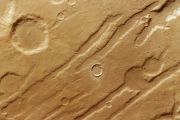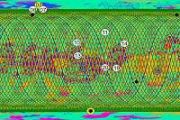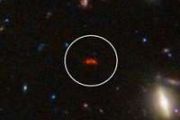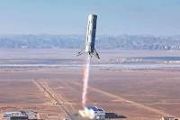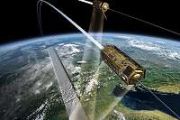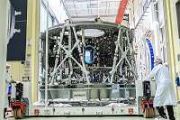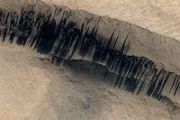
Copernical Team
First ultraviolet data collected by European Space Agency's JUICE mission

Astrotourism—chasing eclipses, meteor showers and elusive dark skies from Earth

For years, small groups of astronomy enthusiasts have traveled the globe chasing the rare solar eclipse. They have embarked on cruises to the middle of the ocean, taken flights into the eclipse's path and even traveled to Antarctica. In August 2017, millions across the U.S. witnessed a total solar eclipse visible from Oregon to South Carolina, with a partial eclipse visible to the rest of the continental U.S.
The interest in astronomical events that this eclipse sparked will likely return with two eclipses visible in the U.S. during the next year—the annular solar eclipse on Oct. 14, 2023, and the total eclipse on April 8, 2024. But astro-tourism—traveling to national parks, observatories or other natural, dark-sky locations to view astronomical events—isn't limited just to chasing eclipses.
According to a recent study, 80% of Americans and one-third of the planet's population can no longer see the Milky Way from their homes because of light pollution.
Lockheed Martin targets small businesses via Next Generation Interceptor
 Lockheed Martin, under the banner of its Next Generation Interceptor (NGI) program, has collaborated with three small businesses to foster growth within the defense industrial sector. This initiative is part of the Department of Defense (DoD) Mentor-Protege Program that facilitates prime contractors to function as mentors, enhancing the business and technical acumen of small businesses.
Th
Lockheed Martin, under the banner of its Next Generation Interceptor (NGI) program, has collaborated with three small businesses to foster growth within the defense industrial sector. This initiative is part of the Department of Defense (DoD) Mentor-Protege Program that facilitates prime contractors to function as mentors, enhancing the business and technical acumen of small businesses.
Th Hawaii observatories play criical role adding color to new space mission
 Observing billions of galaxies across more than a third of the sky and building a 3D map of the universe are all part of the Euclid mission that the European Space Agency launched with its Euclid satellite from Cape Canaveral, Florida. Euclid's dataset is getting a big helping hand from observations taken at three observatories in Hawaii.
The Euclid satellite mission will spend more than s
Observing billions of galaxies across more than a third of the sky and building a 3D map of the universe are all part of the Euclid mission that the European Space Agency launched with its Euclid satellite from Cape Canaveral, Florida. Euclid's dataset is getting a big helping hand from observations taken at three observatories in Hawaii.
The Euclid satellite mission will spend more than s Time appears five times slower in early universe: study
 Time appears to run five times slower in the early universe, scientists said on Monday, for the first time using extraordinarily bright cosmic objects called quasars as "clocks" to confirm this strange phenomenon.
Einstein's theory of relativity predicts that because space is expanding, "we should see the distant universe run in slow motion," said Geraint Lewis, an astrophysicist at the Univ
Time appears to run five times slower in the early universe, scientists said on Monday, for the first time using extraordinarily bright cosmic objects called quasars as "clocks" to confirm this strange phenomenon.
Einstein's theory of relativity predicts that because space is expanding, "we should see the distant universe run in slow motion," said Geraint Lewis, an astrophysicist at the Univ iRocket contracts with US Space Force to transform how launch vehicles are powered
 Innovative Rocket Technologies Inc. (iRocket), a company that provides low cost and rapid access to space with its 100% reusable rockets, announced that it signed a contract with the U.S. Space Force Space Systems Command (SSC). Under the contract, iRocket will further develop its highly reusable rocket engine, which will transform how launch vehicles are powered with clean, sustainable propella
Innovative Rocket Technologies Inc. (iRocket), a company that provides low cost and rapid access to space with its 100% reusable rockets, announced that it signed a contract with the U.S. Space Force Space Systems Command (SSC). Under the contract, iRocket will further develop its highly reusable rocket engine, which will transform how launch vehicles are powered with clean, sustainable propella Time to act on light pollution, say leading experts at NAM conference
 Action on light pollution is long overdue, campaigners will say at a panel event (3 July) at the National Astronomy Meeting in Cardiff. The panellists call for UK governments and local authorities to put policies in place to restore our view of the skies and to mitigate the impacts of excessive light at night on biodiversity and potentially human health.
Light pollution is rarely far from
Action on light pollution is long overdue, campaigners will say at a panel event (3 July) at the National Astronomy Meeting in Cardiff. The panellists call for UK governments and local authorities to put policies in place to restore our view of the skies and to mitigate the impacts of excessive light at night on biodiversity and potentially human health.
Light pollution is rarely far from Unfavorable weather delays final Ariane 5 launch

The farewell flight of Europe's workhorse Ariane 5 rocket, scheduled for Tuesday, has been postponed for 24 hours due to bad weather, operator Arianespace said.
The 117th and final flight of an Ariane 5 rocket, after 27 years of launches, had been due to take off between 2130 and 2305 GMT from Europe's spaceport in Kourou, French Guiana.
"Due to unfavorable winds at high altitude above the Guiana Space Centre, Arianespace decided not to start the final phase of the launch preparation operations," the French firm said.
The nearest launch window was now between 2200 and 2305 GMT on Wednesday "if weather conditions are favorable", it added.
The final flight of an Ariane, whose launches have punctuated life in Kourou for nearly three decades, was originally scheduled for June 16.
It was postponed the day before because of problems with pyrotechnical lines in the rocket's booster. The lines have since been replaced.
The final payload on an Ariane 5 is a French military communications satellite and a German communications satellite.
The arrival in 1996 of the Ariane 5, which was able to carry a far bigger load than its predecessor Ariane 4, allowed Europe to establish itself in the communication satellite market.
Ariane 5 flight VA261: weather delays launch

Europe’s Ariane 5 rocket is being prepared for its final launch, following the replacement of pyrotechnical transmission lines which delayed its earlier scheduled liftoff. Due to unfavourable weather Flight VA261 will now lift off no earlier than 5 July at 23:00 BST/00:00 CEST, pending suitable conditions for launch. You can follow live on ESA Web TV; transmission starts 30 minutes before earliest liftoff time.
Chinese private space company to launch latest rocket in 2024
 In the vanguard of the rapidly evolving commercial space industry, Beijing-based private firm Space Pioneer plans the inaugural launch of its TL 3 carrier rocket in 2024. The launch will signify an ambitious stride toward fortifying China's presence in the commercial space launch market.
As reported in an exclusive interview with China Daily, Kang Yonglai, founder and chairman of Space Pio
In the vanguard of the rapidly evolving commercial space industry, Beijing-based private firm Space Pioneer plans the inaugural launch of its TL 3 carrier rocket in 2024. The launch will signify an ambitious stride toward fortifying China's presence in the commercial space launch market.
As reported in an exclusive interview with China Daily, Kang Yonglai, founder and chairman of Space Pio 


